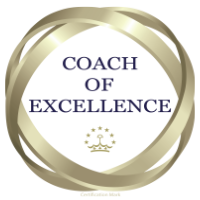 This article was kindly provided to us by Choice – The coaching magazine. Choice is a community for people who use coaching in their work or personal lives.
This article was kindly provided to us by Choice – The coaching magazine. Choice is a community for people who use coaching in their work or personal lives.
They’ve been building a strong, passionate following in the coaching industry for more than a decade. Click the image to find out more or visit their website by clicking here.
Is there really a difference between generations or is it about different stages of life, and how do we coach clients from this lens? What are the difference generational needs, expectations, values and conflicts and what is the impact on coaching? What do you need to know about generational differences in order to build rapport and effectively work with them? How do you coach leaders to manager and build relationships with team members from different generations?
Much has been written about generational challenges in the workplace, from ‘Working with Five Generations in the Workplace” by Forbes in 2011 to “Winning the Generation Game” by The Economist in 2013. How does this impact our coaching leaders in the workplace? With this article I will present a conceptual model put forth by Neil Howe and William Strauss in their book, The Fourth Turning, followed by one approach to effectively coach people of different generations. Let’s begin by understanding generations.
In 2012, Brett and Kate McKay shared this: “Talking about generations is simply a way to acknowledge that because different age groups are raised in less or more nurturing families, and experience historical events at different times in their development, their ‘generational persona’ – their ‘attitudes on family life, gender roles, institutions, politics, religion, lifestyle, and the future’ are shaped in a distinct way.
It’s also important to keep in mind that no generation is ‘better’ or ‘worse’ than another; each generation has unique strengths and weaknesses, each is important, and each provides balance and self-correction to the cycle of history.” According to Strauss and Howe, a generation is the “aggregate of all people born over a span of roughly 20 years, or about the length of one phase of life: childhood (0-20 years old), young adulthood (21-41), midlife (41-62), elderhood (63-83), late elderhood (84+). People “belong to a generation that happens to be passing through an age bracket – a generation with its own memories, language, habits, beliefs, and life lessons.” The people who comprise a generation change as they age.
As a coach you bring your own uniqueness and perspective from your generation.
Strauss and Howe discovered a pattern of generational events they call turnings, each of which lasts about 20 to 22 years. They identify a four-stage cycle of social or mood eras (i.e. turnings) that lasts about 80-90 years. Each turning can be likened to a season: First (High) is Spring; Second (Awakening) is Summer; Third (Unravelling) is Autumn; Fourth (Crisis) is Winter.
A generation is born approximately every 20 years and people are living well into their 90s. The current generations are known as G.I., Silent, Baby Boomers, Gen X, Millennials, and Homeland (see chart below). Each generation experiences “four turnings” approximately every 80 years. Historical turnings and generational archetypes work together to fuel the generational cycles.
Because each of the four generation types experience the four historical turnings at different times in their lives, each generation is shaped differently by the formative moments in history (see chart at right). Looking at the American High (First Turning, 1946-1964) in this chart, America ascended as a global superpower while social movements stalled. The middle class grew amid huge peacetime defence budgets.
Looking at the generations in the workplace today, the Silents were entering young adulthood and the Boomers were entering childhood. The Consciousness or Awakening Revolution (Second Turning, 1964-1984) began with urban riots and counterculture driven by the Boomers who were entering adulthood. This included Vietnam War protests alongside feminist, environmental and black power movements.
The counterculture peaked in 1974 with President Nixon’s Watergate, and the Boomers turned toward New Age lifestyles as hippies turned into yuppies. The Silents were entering midlife, Boomers were entering young adulthood, and Generations X’s were entering childhood. For the Third Turning of Unravelling (1984-2008), we saw a long boom period with celebrity scandal and a stock market boom. During this time people felt optimistic about their own lives and pessimistic about the country.
Rising violence and widening inequality were coupled with individualism. The Silents were entering elderhood, the Boomers were entering midlife, the Generation X’s were entering young adulthood, and the Millennials were entering childhood. We entered the Fourth Turning in 2008 with a global financial crisis that led to the most severe global economic downturn since the Great Depression, and the election of Generation X’s Barack Obama over Silent Generation’s John McCain.
With public trust continuing to ebb, we see the controversial 2016 U.S. presidential elections as an indication that this Fourth Turning is not likely to end soon. If history holds true, the Crisis will last until approximately 2029. During the Crisis, Prophets (Boomers) enter elderhood, Nomads (Generation X’s) enter midlife, Heroes (Millennials) enter young adulthood, and a new generation of Artists (Homeland Generation) is born. The other two living generations (G.I. and Silent) are unlikely to be candidates for coaching.
As coaches, understanding the characteristics of the three generations present in the workplace today may be beneficial. Looking at the chart on the following page, we can make generalities about each generation in areas such as work ethic, leadership and communication styles, motivation, and technology.
Understanding Crisis Another and possibly more beneficial way to view the Boomer, X and Millennial generations is from the lens of the Crisis turning we are in.
- Boomers are idealist prophets who place value on inner convictions and spiritual awakening – self-discovery and authenticity are valued. During the Crisis, Prophets are entering elderhood while providing moral vision and valuesoriented leadership to younger generations. Boomers are also redefining ‘retirement’, with many transitioning to occupations that bring purpose and meaning to their lives.
- Generation X’s are reactive nomads entering mid-life during the Crisis. They are assuming roles as parents and influential leaders within society. Nomads will make personal sacrifices for society’s good – and are blessed with cunning and survival instincts well suited to lead during the Crisis. Effective at pushing efficiency and innovation, they will continue to be free workplace agents.
- Millennials are civic heroes entering young adulthood during the Crisis. They are confident ambitious, and optimistic about life, even in tough times. Oriented toward action, they work well in teams. They are about community, technology, and affluence Redefining what young adulthood is, they place importance on getting married, having children and being community leaders.
| Workplace characteristic | Baby Bloomers (1946-1964) | Generation X (1965-1984) | Millennials (1985-2005 |
| Work Ethic | Workaholics, desire, quality, question authority | Eliminate task, self-reliant, structure/direction, sceptical | What’s next, multi-tasking, tenacity, entrepreneurial |
| Work is… | Exciting, adventure | Difficult challenge, contract | Means to an end, fulfilment |
| Leadership style | Consensual, collegial | Each same, competence, challenge others, ask why | Achievers, collaborative, creative thought |
| Communication | In Person | Direct, immediate | Email, voicemail, voice note |
| Rewards & Feedback | Money, title recognition, give something to put on the wall | Sorry to interrupt-how am I doing, freedom is best reward | When I want it-at push of a button, meaningful work, cool perks |
| Motivated by | Being valued and needed | Freedom and removal of rules | Working with other bright people |
| Work/Life Balances | No balance ‘live to work’ | Balance ‘work to live’ | Balance – it’s 5pm and I’ve got another gig |
| Technology is… | Acquired: microwave, master it | Assimilated: hold in hand, enjoy/use it | Integral: Internet, intangible, employ it |
| Education is…. | A birth right | A way to get there | An incredible expense |
| Authority attitude | Replace or challenge leaders | Ignore leaders | Leaders must respect you |
We will coach three generations over the next five years, each at a different stage of life.
How can we coach to accommodate each generation during the Crisis turning?
- Recognize that each individual is unique, and characteristics of each generation are generalities rather than absolutes.
- Know that as a coach you bring your own uniqueness and perspective from your generation.
- We will coach three generations over the next five years, each at a different stage of life.
- a) Boomers are wise, respected, principled, and creative. Boomers entering elderhood will provide wise guidance and inspiring words through this Crisis.
- b) Generation X’s are transitioning from alienated to mellow as they enter midlife. They are pragmatic leaders who are hands-on and get it done.
- c) Millennials are focused on building and working in teams as they enter young adulthood. While it is beneficial to understand trends and commonalities across generations, what is critical is to be aware of our personal bias and coach the individual, rather than the generational characteristics.

